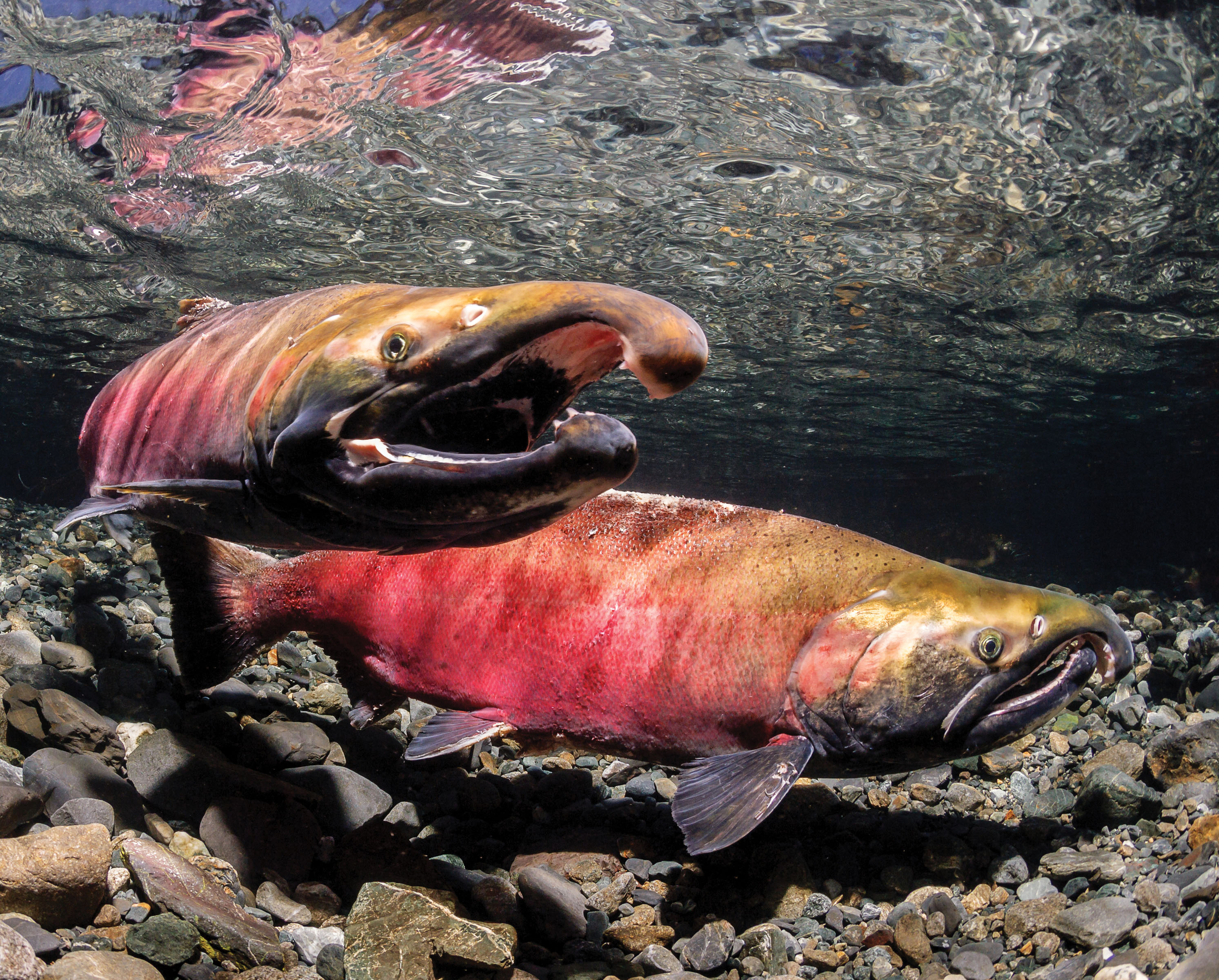Chapter 8
Life Histories
184

185
CHAPTER CONCEPTS
- Life history traits represent the schedule of an organism’s life.
- Life history traits are shaped by trade-offs.
- Organisms differ in the number of times that they reproduce, but they all eventually become senescent.
- Life histories are sensitive to environmental conditions.
Live, Breed, and Die
The coho salmon (Oncorhynchus kisutch) is a beautiful fish that lives a dramatic life. It lays its eggs in rivers that empty into the North Pacific Ocean, from California to Alaska to eastern Russia. The hatchlings live on the energy of their yolk for several weeks and then begin to eat small prey. After growing in the river for a year, the fish swim out to the ocean where they continue to eat and grow for 1 to 3 more years. When they are ready to reproduce, they migrate back to the same river where they hatched. The females make nests in the river bottom and deposit their eggs, which the males then fertilize with their sperm. Shortly after reproducing for the first time, both the male and female salmon rapidly lose strength and physiological abilities, and die.
“Shortly after reproducing for the first time, the male and female salmon rapidly lose strength and physiological abilities, and die.”
The coho salmon is just one of many species of salmon that live in North America. Each has a unique reproductive strategy. Several of its closest relatives, including the chinook salmon (O. tshawytscha) and the sockeye salmon (O. nerka), also migrate to sea as juveniles, return for a single breeding event, and then die. Members of other species, such as the rainbow trout, breed several times during their life. Some populations—known as resident rainbow trout—do not migrate out to the ocean but remain in freshwater rivers. Other populations of rainbow trout—commonly known as steelheads—migrate out to sea and return to the rivers to breed, much like the coho salmon. Unlike the coho, however, steelheads migrate several times and breed each time they return to the freshwater rivers.
Researchers have looked for patterns in the breeding strategies of different species of salmon. When they examined the breeding characteristics of 12 species of salmon from North America, they found that species with larger bodies produce more and larger eggs, and that a higher fraction of their body weight is composed of gonads. When the researchers adjusted for the large differences in body size among species of salmon, they found that for a given body size, there is a trade-off between how many eggs a female can carry and the size of those eggs. A female that tries to produce more eggs can only do so if each egg is smaller. Smaller eggs produce smaller offspring that are less competitive for food and more susceptible to predators. On the other hand, larger eggs contain more yolk, which allows the offspring to hatch at a larger size. Being larger makes the hatchling fish more successful at competing for food and less vulnerable to predators.
One of the most noticeable distinctions occurs among species that breed only once compared with those that breed multiple times. On average, salmon that only breed once have larger bodies as adults and larger eggs than salmon that breed multiple times. Larger bodies allow more efficient swimming, which is important to species that migrate long distances. Based on these traits and changes over evolutionary time, it appears that larger bodies and larger eggs were key evolutionary steps that improved the survival of the offspring enough to favor the unusual strategy of breeding only once, followed immediately by death.
186
The story of the salmon highlights the wide variety of reproductive strategies that exist in organisms. Examining patterns of reproductive strategies among species and the selective forces experienced by species in nature helps us begin to understand why different species have evolved unique strategies. As we shall see in this chapter, organisms have evolved a wide range of alternative strategies for growth, development, and reproduction as a result of fitness trade-offs.
SOURCES: P. B. J. Crespi and R. Teo, Comparative phylogenetic analysis of the evolution of semelparity and life history in salmonid fishes, Evolution 56 (2002): 1008–1020.
I. A. Fleming, Pattern and variability in the breeding system of Atlantic salmon (Salmo salar), with comparisons to other salmonids, Canadian Journal of Fisheries and Aquatic Sciences 55 (1998): 59–76.
 As we have seen in previous chapters, organisms are generally well adapted to the conditions of their environments. Their form and function are influenced by physical and biological factors. Similarly, the strategies that organisms have evolved for sexual maturation, reproduction, and longevity are also shaped by natural selection. In this chapter, we will explore the wide array of strategies that species have evolved and the trade-offs among different traits.
As we have seen in previous chapters, organisms are generally well adapted to the conditions of their environments. Their form and function are influenced by physical and biological factors. Similarly, the strategies that organisms have evolved for sexual maturation, reproduction, and longevity are also shaped by natural selection. In this chapter, we will explore the wide array of strategies that species have evolved and the trade-offs among different traits.